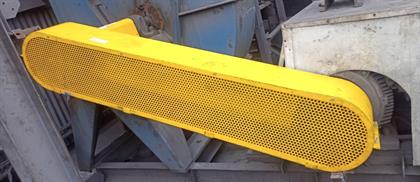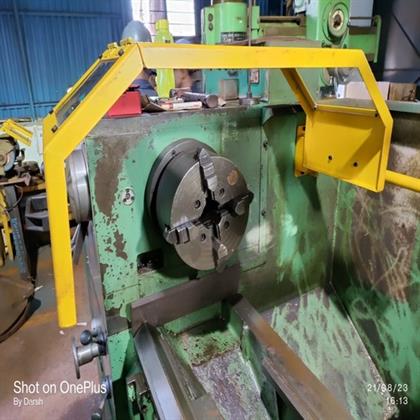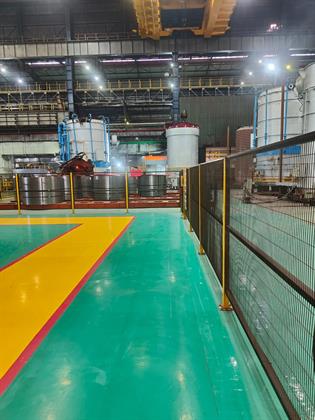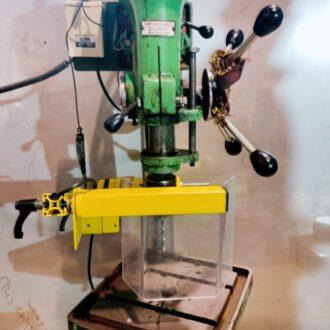
Machine fencing, also known as perimeter guarding or machine guarding, refers to the installation of physical barriers or enclosures around individual machines or equipment to prevent access to hazardous areas. These barriers serve to protect workers from moving parts, electrical hazards, flying debris, and other dangers associated with machinery operation. Here are some key aspects of machine fencing:
Types of Fencing: Machine fencing can take various forms, including wire mesh panels, solid walls, transparent barriers (e.g., polycarbonate), or a combination of these materials. The choice of fencing depends on factors such as the type of machinery, the level of protection required, and regulatory standards.
Safety Compliance: Machine fencing is often required by occupational health and safety regulations to ensure compliance with safety standards. These regulations may specify minimum height requirements, distance from machinery, and other design considerations.
Access Points: While machine fencing restricts access to hazardous areas, it should incorporate access points such as doors, gates, or removable panels for authorized personnel to enter when necessary. These access points are typically equipped with interlocking mechanisms or safety switches to prevent machinery from operating when the enclosure is opened.
Visibility and Communication: Clear visibility of machinery and warning signs on the fencing are essential for communicating potential hazards to workers. Transparent barriers or strategically placed warning labels and signage enhance safety awareness.
Customization: Machine fencing solutions can be customized to fit the specific layout and requirements of different machines and industrial environments. This may include considerations such as the size and shape of the machinery, workflow patterns, and the need for occasional access for maintenance or servicing.
Maintenance and Inspection: Regular maintenance and inspection of machine fencing are crucial to ensure its effectiveness over time. This includes checking for damage, corrosion, or wear, and repairing or replacing components as needed.
Integration with Safety Systems: Machine fencing is often integrated with other safety systems, such as emergency stop buttons, light curtains, and safety sensors, to provide comprehensive protection against accidents and ensure rapid response in emergencies.
Leave a Reply
Related Products
You Might Like Also

chain belt drive guard
V Belt/Chain Drive guards fully enclosed V-Belt Safety Guards, gear drive, and belt drive power transmission system to prevent access to the pinch points around the conveyor belts, fan drives, blower drives, compressor, grinder, and crusher equipment. It helps to keep safe worker/operators around the drive from entanglements Read More

pump coupling safety guard
The pump coupling Guard prevents access to exposed pinch-points around couplings and rotating shaft applications. This guard is designed for the 360 degrees guarding concept. These guards are ANSI/OSHA compliant. Read More

bench grinder machine safety guard
bench grinder machines are critical to protect operators from potential hazards such as flying debris, sparks, and accidental contact with the grinding wheel. Read More

Lathe machine safety guard
r lathe machines are essential to protect operators from potential hazards such as flying debris, rotating parts, and accidental contact with moving components. Read More

safety guards
Increase operator safety by machine perimeter guarding with the highest quality and visual appalling safety fence Read More

drilling machine safety guard
Drilling machine safety guards are crucial for protecting operators from potential hazards when using a drilling machine. These guards help prevent accidents and injuries that can occur due to contact with rotating drill bits, flying debris, or other moving parts of the machine. Read More










